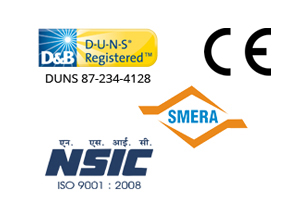Ethylene Oxide (ETO) Sterilizers are a critical component of the sterilization process used in various industries and healthcare facilities in Mumbai. These sterilizers play a crucial role in ensuring that medical equipment, pharmaceutical products, and other items are free from harmful microorganisms, thereby preventing infections and contamination.
The technology behind ETO Sterilizers involves the use of ethylene oxide gas, which has excellent penetrating properties. This gas can reach deep within intricate instruments and equipment, making it an effective method for sterilization. ETO Sterilizers work by denaturing the proteins of microorganisms, effectively killing them and rendering the items sterile.
The Importance of Regulatory Compliance
When dealing with ETO Sterilizers in Mumbai, adhering to regulatory guidelines is of utmost importance. This involves understanding and following the essential regulations set forth by both local and international authorities. Regulatory compliance is not only a legal obligation but also a crucial step towards maintaining and enhancing overall safety standards.
Local and international authorities have established specific rules and standards to govern the safe and proper use of ETO Sterilizers. These regulations cover various aspects, including the handling and storage of ethylene oxide gas, maintenance of the sterilization equipment, and ensuring the safety of personnel involved in the process.
By complying with these guidelines, businesses and facilities using ETO Sterilizers can ensure that their operations meet the highest safety standards. This, in turn, reduces the risk of accidents and potential harm to workers and end-users of the sterilized products or equipment.
Moreover, regulatory compliance inspires confidence among customers and partners. It demonstrates a commitment to safety, quality, and ethical practices. Complying with regulations helps build a positive reputation for the organization, which can be advantageous in competitive markets.

Safety Standards for ETO Sterilizers
Safety remains a paramount concern when utilizing ETO Sterilizers. Implementing specific safety standards during the sterilization process is essential to create a risk-free environment and protect both personnel and end-users.
One crucial aspect of safety standards is the proper handling of hazardous materials, particularly ethylene oxide gas. This gas can be harmful to human health, and it requires careful handling to minimize exposure and potential risks. Personnel must be adequately trained in handling and storing ethylene oxide, and protective equipment should be used as necessary.
Proper ventilation is another critical safety measure. ETO Sterilizers operate using ethylene oxide, which can release toxic fumes if not appropriately ventilated. Ensuring adequate ventilation systems are in place helps dissipate these fumes, reducing the risk of inhalation and promoting a safe working environment.
Emergency preparedness is also integral to safety standards. Having well-defined emergency protocols and response plans in case of accidents, leaks, or any hazardous situations ensures swift and effective actions to mitigate potential harm.
Regular maintenance and calibration of ETO Sterilizers are imperative to ensure their safe and efficient operation. Faulty equipment can lead to safety hazards, so routine inspections and maintenance checks are essential to identify and rectify any issues promptly.
Maintaining and Servicing ETO Sterilizers
Regular maintenance and servicing play a critical role in ensuring the smooth and efficient functioning of ETO Sterilizers. By following a comprehensive maintenance schedule and adhering to proper servicing procedures, organizations can avoid operational disruptions and uphold the reliability of their sterilization equipment.
Establishing a well-defined maintenance schedule is the foundation of effective equipment care. This schedule should include routine inspections, cleaning, and calibration to identify and address any potential issues before they escalate. Adhering to a regular maintenance routine helps prevent unexpected breakdowns and extends the lifespan of the ETO Sterilizers.
During servicing procedures, trained technicians must conduct in-depth assessments of the sterilization equipment. They should examine crucial components, such as the gas supply system, valves, pressure gauges, and safety mechanisms. Any signs of wear, malfunction, or deviations from optimal performance must be promptly addressed and rectified.
Preventive measures are of utmost importance to avoid operational disruptions and potential safety hazards. Implementing a proactive approach involves preemptively replacing worn-out parts, conducting preventative repairs, and investing in quality components. This approach not only reduces the risk of unexpected breakdowns but also enhances the overall reliability and efficiency of ETO Sterilizers.
Proper documentation is essential throughout the maintenance and servicing processes. Keeping accurate records of maintenance activities, repairs, and any component replacements helps track the sterilizer’s performance over time. Additionally, it aids in identifying patterns of wear and tear, facilitating more informed decision-making for future maintenance requirements.
Addressing Common Challenges
ETO Sterilization, while a valuable process, can indeed face various challenges that require careful consideration and effective solutions. In this section, we explore and tackle these common challenges, ensuring that compliance and safety standards are upheld in Mumbai.
Environmental concerns are a significant challenge associated with ETO Sterilization. Ethylene oxide gas, if not managed properly, can have adverse effects on the environment. To address this, organizations should implement efficient gas emission control systems and invest in environmentally friendly technologies to minimize the impact on air quality.
Ensuring operational intricacies are properly managed is another crucial aspect. ETO Sterilization requires precise control of temperature, humidity, and gas concentration. Regular monitoring and calibration of equipment are essential to maintain consistent sterilization results and prevent any deviations from established parameters.
Moreover, handling hazardous materials like ethylene oxide gas demands strict adherence to safety protocols. Providing thorough training to personnel on safe handling procedures, emergency response, and the use of personal protective equipment is vital to minimize risks and promote a culture of safety.






